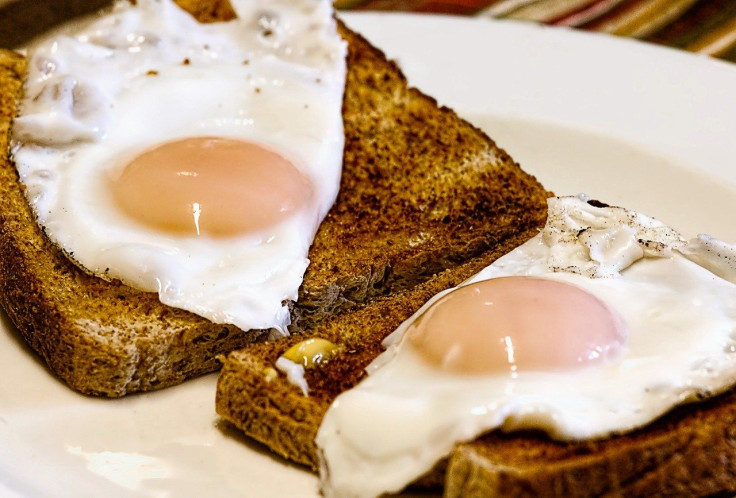Interesting Health Benefits Of Eggs

National Egg Day may not be as popular as most food holidays, but there's no denying that the breakfast staple is an important part of every American's breakfast.
On National Egg Day 2021, learn about these little known facts about eggs and the number of benefits they offer, courtesy of Healthline and Eat This, Not That.
The yolk and the whites have the same amount of protein.
As it turns out, the yolk and the white of an egg contain 3 grams of protein each. The difference between the two, however, lies in the number of calories. The yolk of an egg contains 60 calories as opposed to the white's 15 calories.
Simply put, you get the same amount of nutrients for fewer calories if you just eat the egg whites.
How thick an eggshell is will depend on the age of the laying hen.
A misconception about brown eggs is that they generally have thicker shells than white eggs. What most people don't know is that the thickness of an eggshell totally depends on the age of the chicken. Young chickens lay eggs with harder shells while older chickens produce thinner shells.
Chicken earlobes can help predict what egg color it will lay.
A chicken's earlobe can help predict the color of the eggs it will lay. As strange as it may sound, hens with white earlobes are more likely to produce white eggs, while those with red or brown earlobes lay brown eggs.
Eggs contain choline.
What most people are not aware of is that eggs are rich in choline, a nutrient that builds cell membranes and signaling molecules in the brain. According to Healthline, whole eggs are good sources of this nutrient, containing about 100 mg of choline per egg.
You can see how old your eggs are by testing their buoyancy.
If you place an egg in a cup of water and it floats, it means that the egg is old and it's probably best if you don't eat it anymore. If it stays at the bottom of the cup, however, that means the egg is still fresh since it still hasn't developed an air pocket inside its shell.

Celebrate Easter by making delicious Deviled Eggs. Photo: Pixabay/Michael Sylvester
Brown eggs are more expensive than white, but it's not because they're healthier.
Brown eggs are more expensive than white ones because the chickens who lay them are physically bigger, requiring farmers to spend more on their food.
Egg raises HDL (the good cholesterol).
High-density lipoprotein is known to increase with the consumption of eggs. People who have higher HDL levels tend to have a reduced risk of developing heart disease and stroke.
Eggs are one of the few dietary sources of vitamin D.
Sunlight isn't the only source of vitamin D. Eggs are also rich in the vitamin, and consuming more would allow you to keep your bones and teeth healthy.
American eggs need to be refrigerated.
In the United States, all eggs are required to be washed at the processing plant. This process strips them off of the natural lining that protects them from an infection called "bloom," so handlers refrigerate the eggs to minimize the possibility of bacterial infection.
All eggs start out white.
Although eggs will eventually differ in color when they reach maturity, all of them initially start out as white.
It is packed with nutrients.
A single boiled egg contains phosphorus, vitamin A, vitamin B5, folate, vitamin B2, and pretty much almost every nutrient your body needs. This is why eggs are considered the perfect food.
Not every egg in your carton is the same size.
Eggs vary in actual size and weight, so there is no guarantee that all your eggs are of the same size even if they all come from the same carton. This is because the USDA has guidelines for egg weights per dozen and not for each individual egg.

The price of eggs in the U.S. could continue to fall due to several factors, according to the largest egg supplier. Eggs are pictured on a poultry farm in the Hesbaye region near Namur, England, on Aug. 12, 2017. . Photo: John Thys /AFP/Getty Images





















